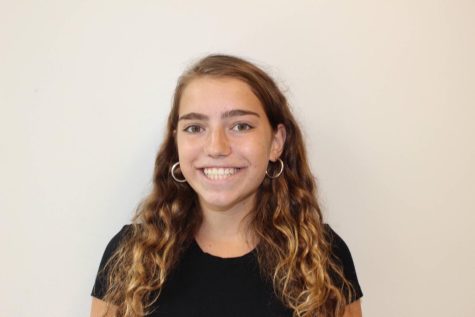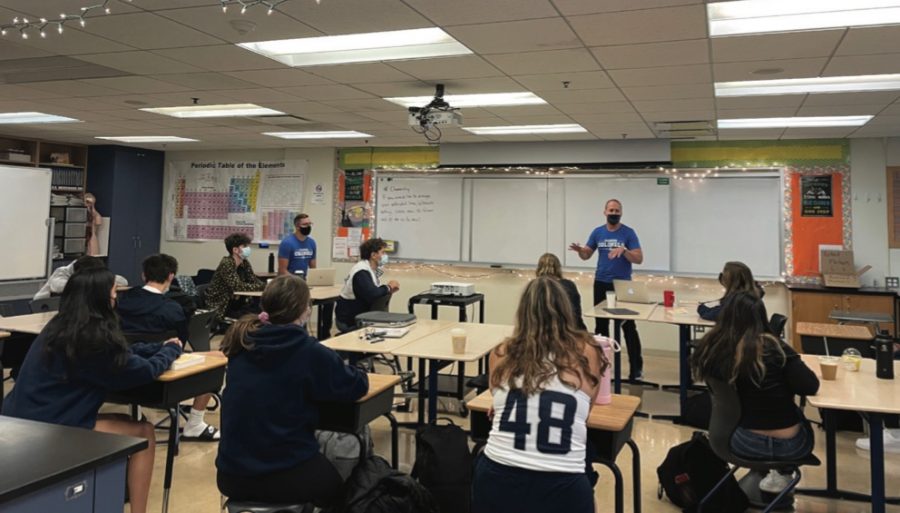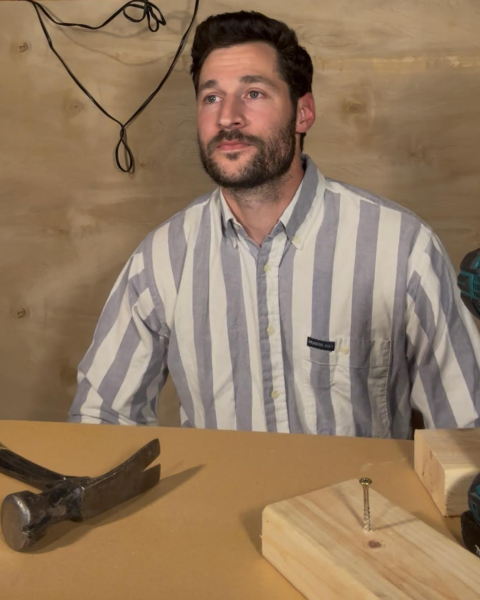Two For One
Cross Divisional Climate Science and Environmental Politics Class Debuts at Parker
Lake Michigan’s blue water with a strong breeze is a landmark for the city of Chicago, but it can also be studied to understand the effects of climate change. Parker’s new cross-departmental Climate Science and Environmental Politics class visited the lake as part of their learning. Upper School science teacher Ryan Zaremba and Upper School history teacher Andrew Bigelow are co-teaching the new class.
Although this is the first year of the cross-departmental class, Zaremba first started individually teaching this course as a solely Climate Science course two years ago. Zaremba believes that the science and politics of climate change go hand-in-hand so he was excited to have Bigelow on board, saying Bigelow “and his energy and his knowledge of politics and policy” brought the class to a new level.
“Climate Science is Mr. Zaremba’s idea of combining his passion and his elective on climate science with my passion for political activism, civic engagement, environmental justice,” Bigelow said.
One of their shared goals in creating this course was to raise awareness. Zaremba believes that the media often portrays that climate change is happening, but many people still do not understand what climate change is. “It’s important that we become aware of the scientific knowledge, like understanding what mechanisms are at play, but then also digging in more on why is our policy contradicting the data,” Zaremba said.
Senior Ivy Jacobs is currently enrolled in the class and believes it is important to learn about the science of climate change paired with the policies. “When you think about it on a broader scale, policy regulates these things, like greenhouse gasses, and policy is part of the solution,” Jacobs said.
Another goal of the class is to create climate activists. Bigelow believes that as part of Parker’s mission to create “life-long learners,” it is important to teach science in unity with activism to create students who will be “extremely active and participatory” in our democracy.
“The goal is for the kids to become well versed on how to be an activist to help slow climate change,” Bigelow said, “and take whatever measures we can to slow the warming of the earth.”
Students in the Climate Science and Environmental Politics Class receive two different grades: one for history and one for science. They also receive one semester’s worth of credit for each class.
The Climate Science and Environmental Politics Class meets five times a week. On Monday and Tuesday, the students learn about the science of climate change. On Thursday and Friday, they learn about the history and activism side of climate change. Wednesdays serve as the lab day, experimental day, and guest-speaker day. Although they teach about different topics on different days, that does not mean they teach in discord. “We both jump in, and we both lead the class together,” Zaremba said.
The students in the class have been reading essays from a book titled “All We Can Save,” edited by Ayana Elizabeth Johnson and Katharine Wilkinson, who write, “From women at the forefront of the climate movement, we’re harnessing truth, courage and solutions, to lead humanity forward.”
Jacobs is enjoying “All We Can Save.” She appreciates how it talks about all different kinds of people. “You often hear about climate change from a bunch of white men, but hearing it from different perspectives, especially those specifically affected by climate change, which are people of color, I think is really valuable,”Jacobs said. “It has been my favorite part of the class.”
One of the student activities was comparing the text of an arborist to the text of an indigenous woman. Jacobs expressed that these texts shared the same opinion on one way to combat climate change. “Often we think the solution is innovation, creating new technology, and funneling a bunch of money into projects,” Jacobs said, “But these essays have taught me that one of the important things is to let the earth, nature, and natural resources do their own thing.”
According to Bigelow, the gender makeup of the class reflects the gender makeup of the environmental justice field: predominantly led by women. The gender make-up of the students in the class is fourteen girls and four boys. “It’s almost overwhelmingly led by women,” Bigelow said, “Which is exactly the thesis of this book ‘All We Can Save’ because their argument is that for some reason, because women tend to be more compassionate and empathetic, they’re the ones leading the charge against one of the greatest challenges in the history of the world.”








